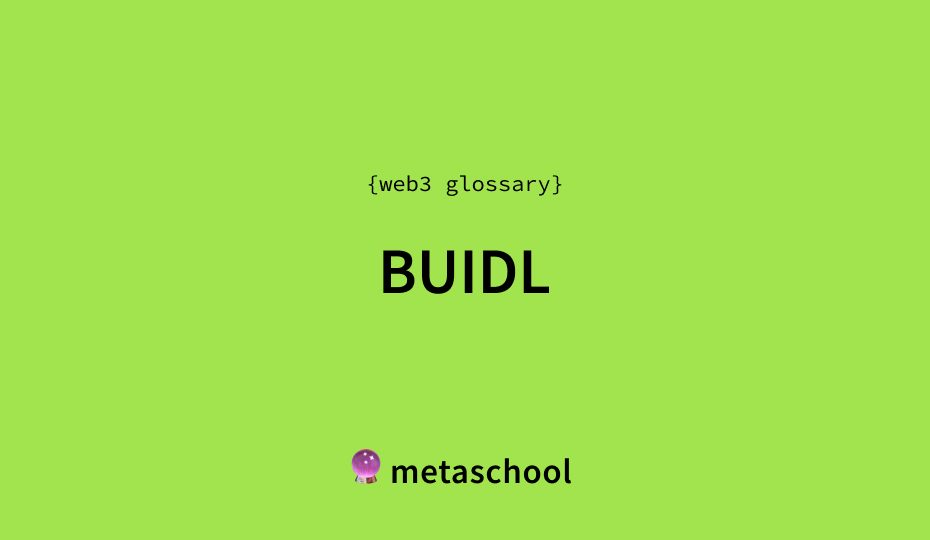Table of Contents
What is the meaning of BUIDL?📖
BUIDL is an intentional disarrangement of letters in the term “build”, which is a word commonly used in developer spheres on Twitter, Reddit, Github and Discord.
The deliberate jumbling up of alphabets takes inspiration from HODL, another term in the crypto space that was inspired by an accidental tweet which really meant to say someone was holding their coins in a bearish market.
Example sentence: “My only goal for the next two years is to learn, BUIDL and ship projects available on Metaschool!”
The concept of BUIDL
BUIDL can be understood as a rallying cry for those who are contributing to and building the blockchain ecosystem, because without BUIDLing, the space would fade away and die.
This is also one of the major reasons why BUIDL, as a term, has been popularized and is used to encourage the cryptocurrency community to actively contribute rather than simply hodling and hoping for the best or expecting others to come in and buidl for them.
The other reason is that if you truly believe in the future of cryptocurrency, you must participate in the creation (read: buidling) of crypto and blockchain-based projects that will be used. This can be accomplished in a number of ways. It might be through working on smart contracts or creating dApps in their many forms.
BUIDL as a crypto action verb
Of course, bigwigs like Bitcoin and Ethereum are doing well for themselves, but the #BUIDL movement argues that some initiatives will always be needing participation of users to get the ball rolling. It also insinuates that there is always a room for more competitors. Thus, BUIDling must not stop.
BUIDL also entails a hustler/philosophical approach. It compels one to learn, understand and create rather than speculate, mull and rummage. Calling it a crypto action verb won’t be wrong.
In conclusion, the term promotes motivation, excitement and active adoption of web 3.0.
Crypto stalwarts that have used BUIDL in their quotes
“The industry is maturing, and it’s time to move beyond HODLing and start BUIDLing”
– Brian Armstrong, CEO of Coinbase
“Investing in crypto is not enough. We need more people to BUIDL the decentralized future we envision”
– Balaji S. Srinivasan, angel investor and former CTO of Coinbase
“It’s time to BUIDL”
– Vitalik Buterin, co-founder of Ethereum
FAQs
BUIDLing a successful blockchain community requires effort and focus. Additionally, you may gain insights from expert BUIDLers’ experiences. Always create something keeping an eye on user needs, like Ethereum‘s EVM for smart contracts. Document and be transparent about project developments to attract talent. Communicate with BUIDLers and users. Knit the community together, foster participation, and incentivize exceptional members. Lastly, maintain a healthy relationship for continuous success.
Peer-to-peer or P2P networks have existed before decentralization. However, they play a special role in decentralized systems.
P2P networks themselves are decentralized networks because the latter have nodes that do all the communication. These nodes follow the P2P protocol. As a result, when you are BUIDLing or developing a project in blockchain, its core will always be decentralization and its working mechanism will majorly depend on P2P. Thus, decentralization and P2P in blockchain work as the prerequisites to BUIDLing something extraordinary and useful. This is how BUIDL aligns with decentralization and P2P networks.
Challenges in crypto project development include strict crypto laws in many countries, requiring careful geographical selection. The volatile and uncertain crypto market demands constant efforts to maintain product value. Blockchain security must be top-notch to combat smart hackers and common attacks. Scalability and interoperability remain significant challenges. The lack of widespread understanding about blockchain development creates a gap in simplifying core concepts.
